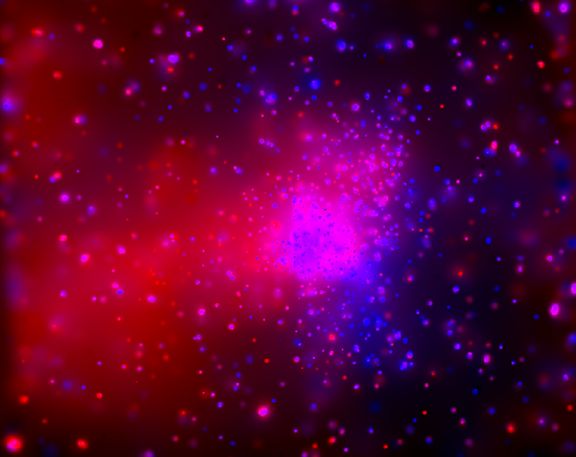
|
Explanation: About 5,000 light-years away, toward the constellation Sagittarius and the center of our galaxy, lies the bright star forming region cataloged as M17. In visible light, M17's bowed and hollowed-out appearance has resulted in many popular names like the Horseshoe, Swan, Omega, and Lobster nebula. But what has sculpted this glowing gas cloud? This Chandra Observatory image of x-rays from M17 provides a clue. Many massive young stars are responsible for the pink central region of the false-color x-ray picture, their colliding stellar winds producing the multimillion degree gas cloud which extends ten or so light-years to the left. When compared with visible light images, this x-ray hot cloud is partly surrounded by the nebula's cooler gas. In fact, having carved out a central cavity the hot gas seems to be flowing out of the horseshoe shape like champagne from an uncorked bottle ... suggesting yet another name for star forming region M17.
|
January February March April May June July August September October November December |
| ||||||||||||||||||||||||||||||||||||||||||||||||
NASA Web Site Statements, Warnings, and Disclaimers
NASA Official: Jay Norris. Specific rights apply.
A service of: LHEA at NASA / GSFC
& Michigan Tech. U.
Based on Astronomy Picture
Of the Day
Publications with keywords: M 17 - emission nebula - star formation
Publications with words: M 17 - emission nebula - star formation
See also:
- APOD: 2025 September 19 B The NGC 6914 Complex
- APOD: 2025 September 10 B The Great Lacerta Nebula
- APOD: 2025 July 21 B Cats Paw Nebula from Webb Space Telescope
- APOD: 2025 July 16 B The Rosette Nebula from DECam
- APOD: 2025 July 10 B Lynds Dark Nebula 1251
- APOD: 2025 July 5 B Ou4: The Giant Squid Nebula
- APOD: 2025 June 26 B The Seagull Nebula
